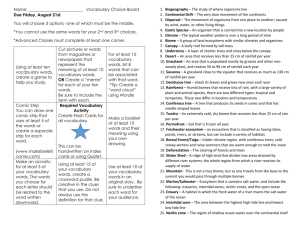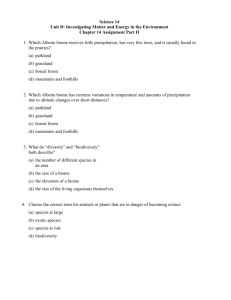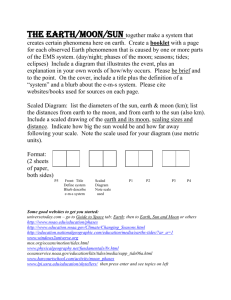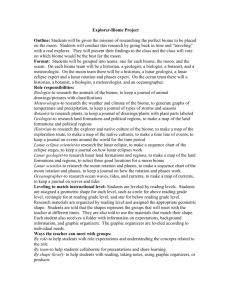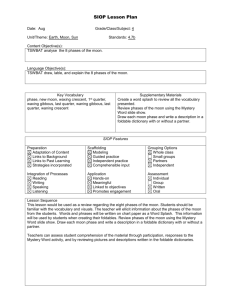File - ENVIRONMENTAL SCIENCE
advertisement
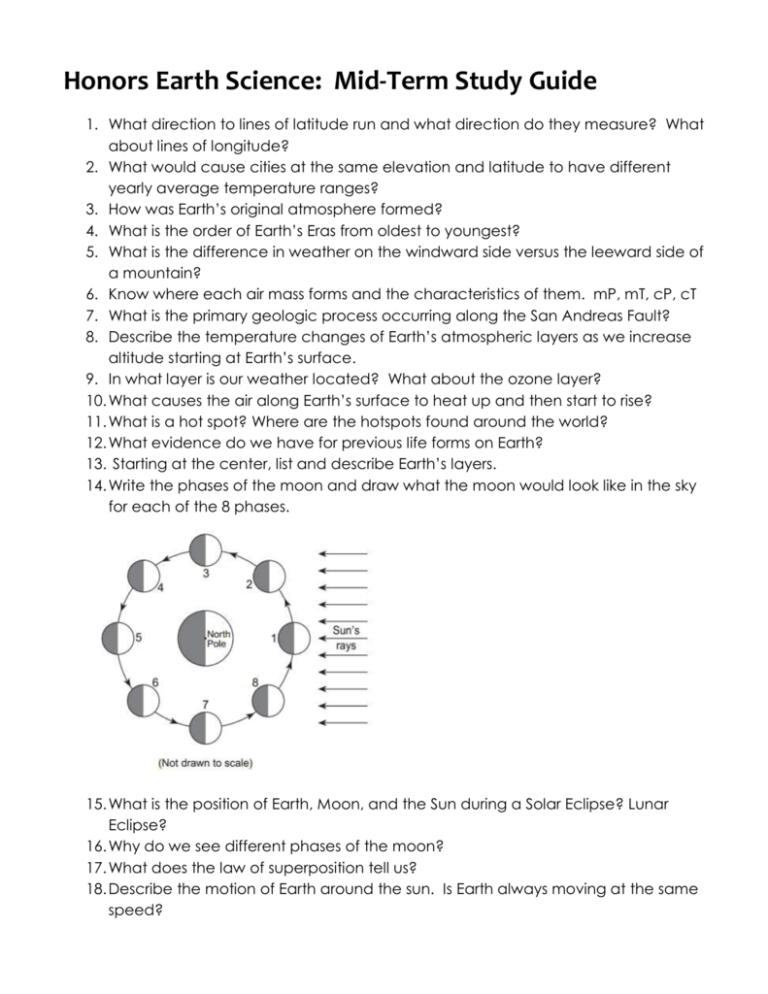
Honors Earth Science: Mid-Term Study Guide 1. What direction to lines of latitude run and what direction do they measure? What about lines of longitude? 2. What would cause cities at the same elevation and latitude to have different yearly average temperature ranges? 3. How was Earth’s original atmosphere formed? 4. What is the order of Earth’s Eras from oldest to youngest? 5. What is the difference in weather on the windward side versus the leeward side of a mountain? 6. Know where each air mass forms and the characteristics of them. mP, mT, cP, cT 7. What is the primary geologic process occurring along the San Andreas Fault? 8. Describe the temperature changes of Earth’s atmospheric layers as we increase altitude starting at Earth’s surface. 9. In what layer is our weather located? What about the ozone layer? 10. What causes the air along Earth’s surface to heat up and then start to rise? 11. What is a hot spot? Where are the hotspots found around the world? 12. What evidence do we have for previous life forms on Earth? 13. Starting at the center, list and describe Earth’s layers. 14. Write the phases of the moon and draw what the moon would look like in the sky for each of the 8 phases. 15. What is the position of Earth, Moon, and the Sun during a Solar Eclipse? Lunar Eclipse? 16. Why do we see different phases of the moon? 17. What does the law of superposition tell us? 18. Describe the motion of Earth around the sun. Is Earth always moving at the same speed? The map below shows air pressures recorded in millibars (mb). 19. Draw isobars for 996-mb, 1000-mb, and 1004-mb on the map above. 20. What are the 3 types of plate boundaries? How do the plates move at each and what features do we find at each? 21. What factors increase the destruction of an earthquake? 22. What information can we learn from a graph showing the time differences between the seismic P-waves and the seismic S-waves as they travel through Earth? 23. How do air masses move? 24. What occurs when a fast-moving cold air mass moves into a region of warmer, moist air? 25. What factors contribute to the formation of a hurricane? 26. How is climate different from weather? 27. What gases make up Earth’s atmosphere? Which is the most abundant? 28. How could an abiotic factor impact the diversity of an ecosystem? 29. How could the decline of one species’ population impact an entire community (the rest of the species in the food web)? 30. What is an invasive species? Give some examples. 31. How does clear cutting negatively impact the biodiversity of an area? 32. Subsurface ocean currents continually circulate from the warm waters near the equator to the colder waters in other parts of the world. What is the main cause of these currents? 33. Why is it important to conserve the biodiversity of Earth? 34. What biome has a climate that is very cold and dry? 35. What is a grassland with scattered trees called? 36. What biome usually contains orchids, ferns, and other plants that live on the branches of trees? 37. Why don’t many trees grow in a grassland? 38. What biome has the greatest species diversity?

